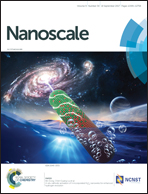Upconversion processes: versatile biological applications and biosafety
Abstract
Lanthanide-doped photon upconverting nanomaterials are evolving as a new class of imaging contrast agents, offering highly promising prospects in the area of biomedical applications. Owing to their ability to convert long-wavelength near-infrared excitation radiation into shorter-wavelength emissions, these nanomaterials are well suited to yield properties of low imaging background, large anti-Stokes shift, along with high optical penetration depth of NIR light for deep tissue optical imaging or light-activated drug release and therapy. Such materials have potential for significant advantages in analytical applications compared to molecular fluorophores and quantum dots. The use of IR radiation as an excitation source diminishes autofluorescence and scattering of excitation radiation, which leads to a reduction of background in optical experiments. The upconverting nanocrystals show exceptional photostability and are constituted of materials that are not significantly toxic to biological organisms. Excitation at long wavelengths also minimizes damage to biological materials. In this detailed review, various mechanisms operating for the upconversion process, and methods that are utilized to synthesize and decorate upconverting nanoparticles are investigated to elucidate by what means absorption and emission can be tuned. Up-to-date reports concerning cellular internalization, biodistribution, excretion, cytotoxicity and in vivo toxic effects of UCNPs are discussed. Specifically, studies which assessed the relationship between the chemical and physical properties of UCNPs and their biodistribution, excretion, and toxic effects are reviewed in detail. Finally, we also deliberate the challenges of guaranteeing the biosafety of UCNPs in vivo.



 Please wait while we load your content...
Please wait while we load your content...